Vera Klement, Painter Who Saw Both Beauty and Evil, Dies at 93
A Holocaust survivor, she once said that she sought in her art to “recognize the nightmare but confirm rather than deny human life.”
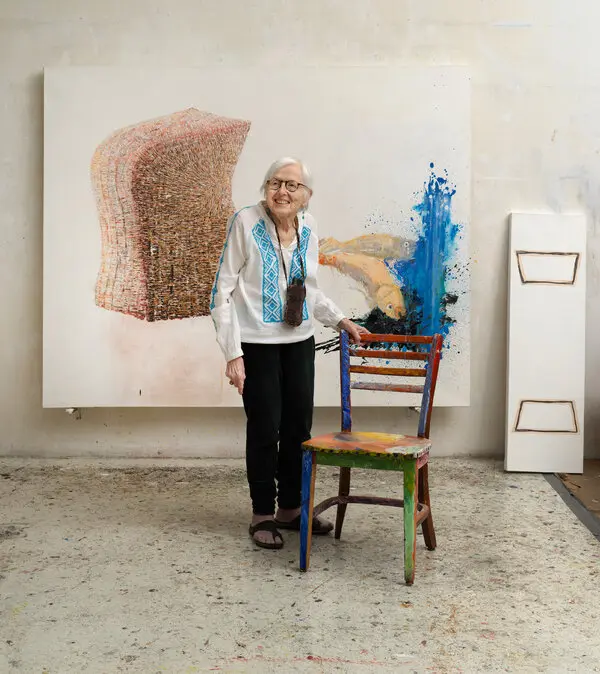
In late 2009, as she was about to turn 80, Vera Klement was spattering and brushing red paint onto a 6-by-7-foot canvas on the floor of her loft in Chicago where she lived and worked. It depicted a faceless man, his arms pressed tightly to his chest, surrounded by a field of red. To the right, separated by white space, was a black rectangle.
“This is a homage to Shostakovich,” she said in the short film “Vera Klement: Blunt Edge,” directed by Wonjung Bae, referring to the Russian composer and pianist Dmitri Shostakovich. (Ms. Bae had made initial contact with her by email, expressing her admiration.) “It’s an attempt to memorialize his struggle with the Soviet regime that tried in every way to suppress his freedom and individuality,” Ms. Klement added. “The pose is holding onto himself.”
The rectangle, she added, was “the back door at which most Russians expected a visit from the government in the middle of the night.”
Ms. Klement, a Holocaust survivor who was known for paintings that combined elements of Abstract Expressionism and figurative art, died on Oct. 20 in Evanston, Ill. She was 93. Her death, at a retirement home, was confirmed by Max Shapey, her son. It was not widely reported outside Chicago.
Ms. Klement’s paintings — of basic subjects like trees, landscapes and human figures — were influenced by her love of music and literature.
“I would use the word ‘poet’ for her,” Nathan Kemler, director of galleries and collections at Grand Valley State University, in Grand Rapids, Mich., which exhibited Ms. Klement’s paintings in 2021, said in a phone interview.
In an email, he added: “Vera’s story is one I wanted to share with our community because it’s also our collective story. It’s a narrative of how we move though life holding both light and dark, beauty and evil, life and death & joy and sorrow.”
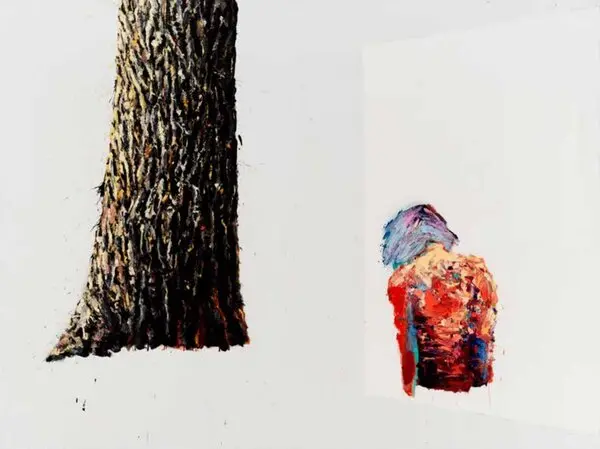
In Ms. Klement’s “Leafless” (1985), the upper half of a woman, painted in brilliant colors, bows in apparent anguish toward a tree; we see its bark in complex detail, but no branches or leaves. The images are separated from each other and from the world around them. In the catalog for the 2021 exhibition, Mr. Shapey wrote that the painting suggested his mother’s separation from Zoppot, Germany, the seaside resort town where she lived as a child.
In “Greening” (2014), a massive tree, severed from its roots, floats beside a rose garden (created by splatters of red paint) that hovers behind a white-framed doorway, indicating a possible barrier to entry into a garden for the tree — or anything else.
And in “The Blossoming” (2018), Ms. Klement painted a spiritless flatland, with only train tracks and traces of snow offering hints of life. Above it is a shaggy, unruly, colorful abstract, as alive as the plain below it is inert.
“The bush forever blooms,grows, luxuriates,” Mr. Shapey wrote. “Life always conquers death; the beauty of nature ultimately triumphs.”
In“Strange Flowers” (2014), Ms. Klement drew an oarless, empty lifeboat in charcoal and surrounded it with bursts of yellow-red fire, which she said were bomb explosions — an image that, she said, symbolized the transport of unseen occupants from danger.
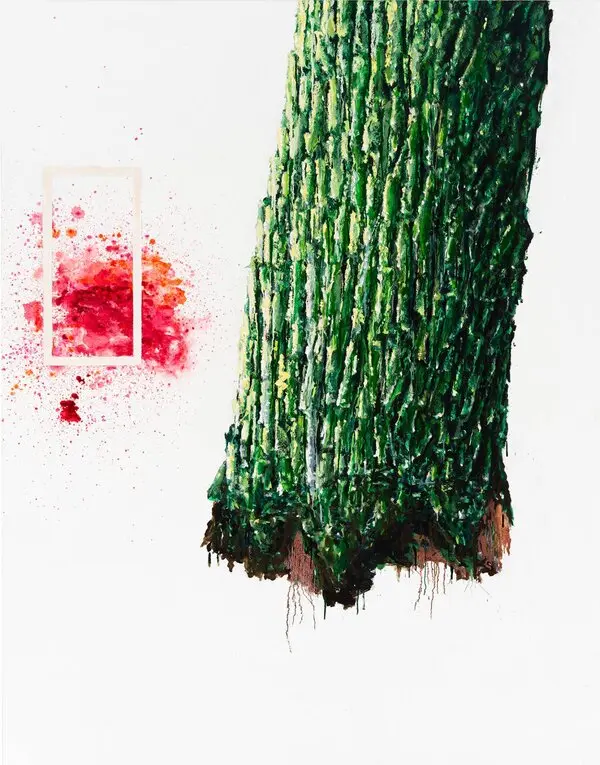

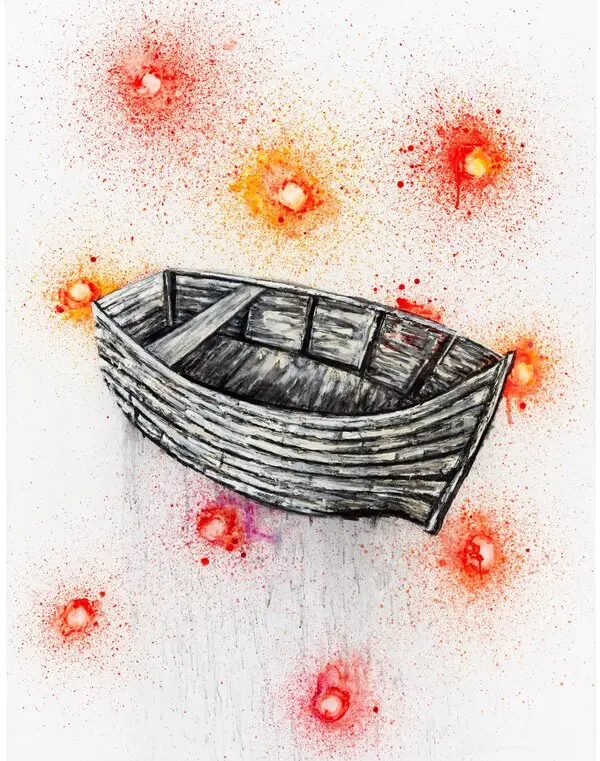
Ms. Klement once said that she preferred that the meaning of her paintings remain ambiguous but that she understood that some are clearly sad.
“To me every painting I make is extremely joyous, extremely exhilarating,” she told The Chicago Tribune in 1987. “They recognize the nightmare but confirm rather than deny human life.”
Vera Klementovna Schapiro was born on Dec. 14, 1929, in the Free City of Danzig, a city-state in Germany (now Gdansk, Poland), and grew up within its borders in the town of Zoppot (now Sopot, Poland). Her parents had immigrated from Russia. Her father, Klemens Schapiro, owned a lumberyard, and her mother, Rose (Rakovschchik) Schapiro, was a skilled pianist and ran the home.
The Nazis’ increasing persecution of Jews ended Vera’s education, and in 1938 her father’s business in Danzig was seized, forcing him to flee, to Gdynia, Poland. Then, after the Gestapo broke into their apartment, Vera, her mother and her older brother, Leonard, moved in with cousins and applied for exit visas.
The experience “ruined me,” Ms. Klement said in an oral history interview in 2015 with the Smithsonian Institution’s Archives of American Art. “I occasionally have dreams of someone breaking into a window or a door.”
After Kristallnacht, the Nazis’ night of violent antisemitic pogroms in November 1938, the Schapiros received exit visas. After learning that Gestapo officers were waiting for them at the cousins’ home, they took the train to Gdynia, where they reunited with Mr. Schapiro. They boarded the ocean liner Pilsudski for Manhattan on Dec. 12 and arrived 12 days later.
Being forced to leave Zoppot was excruciating for Vera.
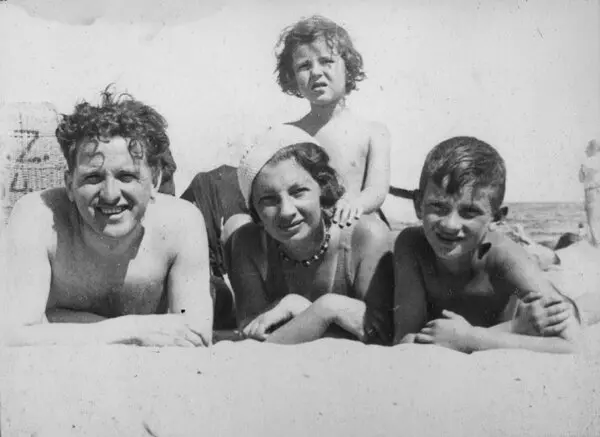
Her painting “Expulsion” hints at the pain of being a refugee. On the left is a field of colors created by dots, splashes and strokes; in the middle is a figure holding his head in his hands; to the right are strips of gray, blue and black that seem to represent “a destination that the figure has fallen from grace to inhabit,” Gregg Hertzlieb, the former curator and director of the Brauer Museum of Art at Valparaiso University, wrote in Valparaiso Poetry Review.
In Manhattan, where her father got a job in a lumberyard and also taught Vera to paint, Ms. Klement graduated from the High School of Music & Art (now the Fiorello H. LaGuardia High School of Music & Art and Performing Arts) and earned a two-year certificate from the Cooper Union in 1950.
She had early success with woodcuts that were influenced by Edvard Munch and German Expressionism. One of them was bought by the Museum of Modern Art in 1953. Her early paintings were figurative, but she moved into Abstract Expressionism, inspired by the painter Theodoros Stamos, one of the style’s earliest adherents.
Abstract Expressionism “suited me, I suppose, as far as a worldview: the notion of being at risk, on the edge, existential,” she told The Tribune. “And I think that has remained with me. It was the basis of my way of looking at art as heroic and tragic.”
As she continued to work in New York — and, after 1964, in Chicago — her paintings eventually embraced figurative art again — and sometimes combined the two.
In the 1970s, she became an activist in the art world as a founding member of the Five, a group of abstract artists who worked together to hold exhibitions of huge works in the lobbies of buildings in Chicago, and an active member of the Artemisia Gallery, a feminist cooperative there.
By then she had begun teaching at the University of Chicago, where she remained a respected faculty member until 1995.
“Vera taught me that a painter must balance craft and ideas: too much skill and a painting is boring, too conceptual and a painting is bloodless,” Joanne Berens, a former student, wrote in an email. “Although her own ideas came from high European culture, Vera was never a snob and encouraged her students to express ideas that came from the stuff of their own lives.”
Ms. Klement received a Guggenheim fellowship in 1981.
In addition to her son, she is survived by her life partner, Peter Baker, a retired pediatrician. Her marriages to Werner Torkanowsky, a violinist and conductor, and Ralph Shapey, a composer and conductor, ended in divorce.
In 2019, Ms. Klement completed “Carpeted,” an Abstract Expressionist painting of a flying carpet. When it was done, she retired.
“She was slowing down and making fewer and fewer paintings,” her son, Mr. Shapey, said. “She hadn’t run out of ideas. But she looked at it and said, ‘I’ve said everything I want to.’”
Richard Sandomir is an obituaries writer. He previously wrote about sports media and sports business. He is also the author of several books, including “The Pride of the Yankees: Lou Gehrig, Gary Cooper and the Making of a Classic.”
